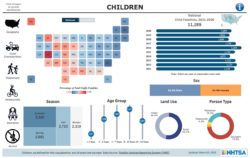Because pickup trucks are very popular while at the same time often challenging for CR use, SRN focuses special attention on understanding them so we can provide helpful guidance in our publications, such as the LATCH Manual.
Read More from “Ask Katrina: Sometimes, Finding Information for Using CRs in Pickup Trucks Is Half the Battle”Ask Katrina: Sometimes, Finding Information for Using CRs in Pickup Trucks Is Half the Battle
In this regular column, SRN shares vehicle-related information from Katrina Rose, SRN collaborator and vehicle liaison for the LATCH Manual. For the March/April 2023 issue, Katrina shared answers to some questions posed by technicians regarding pickup trucks.


